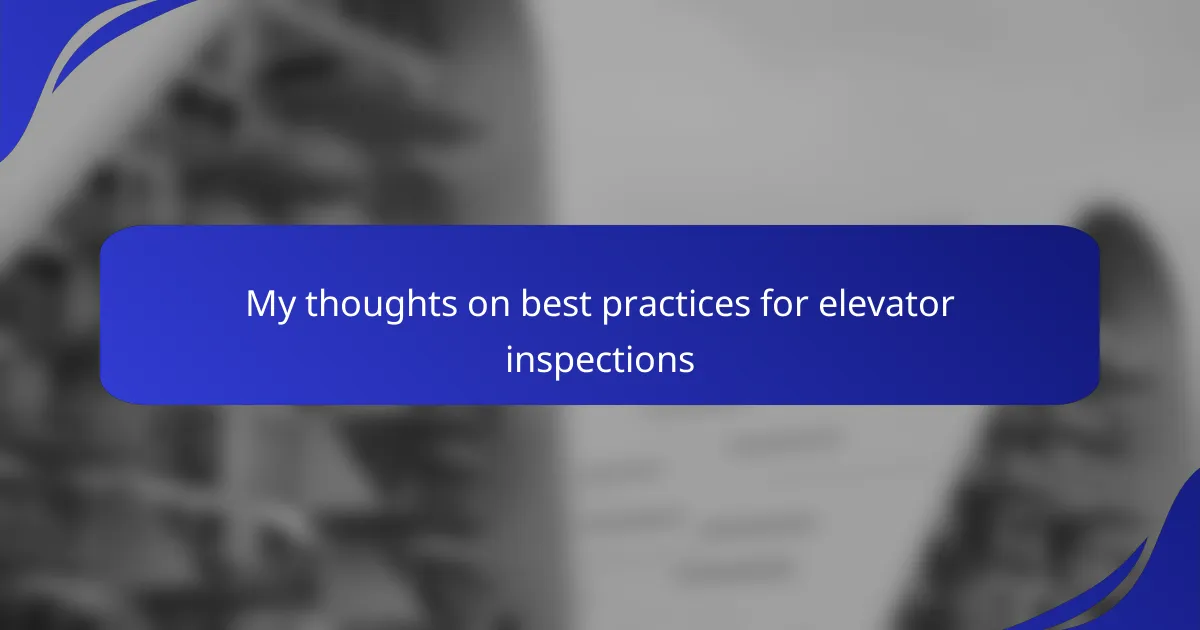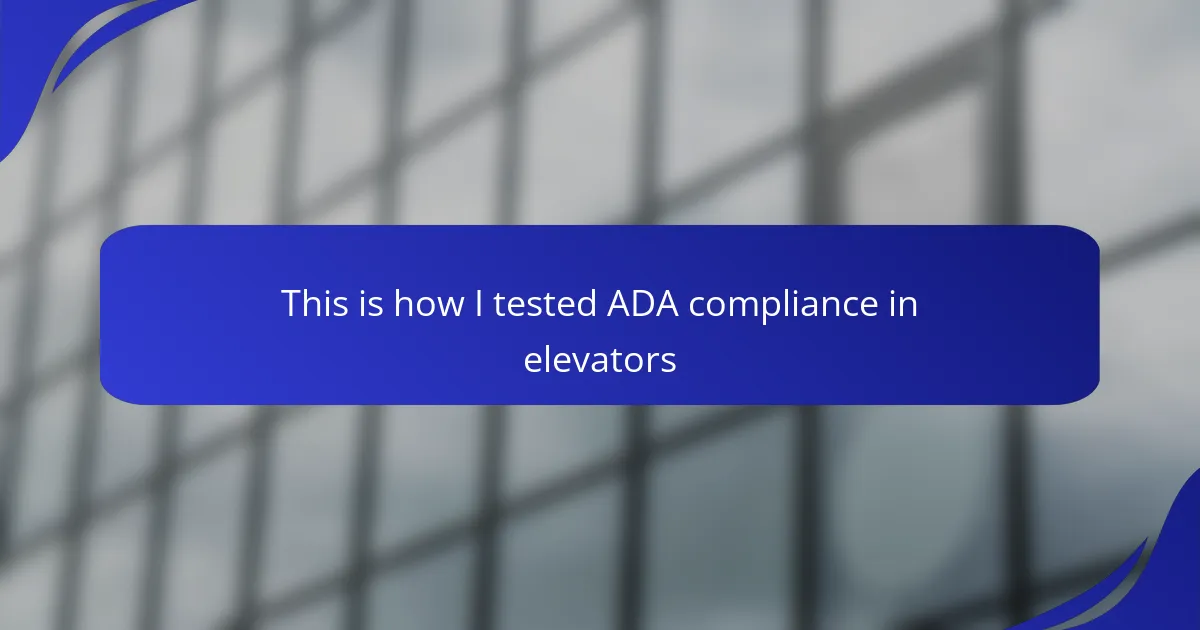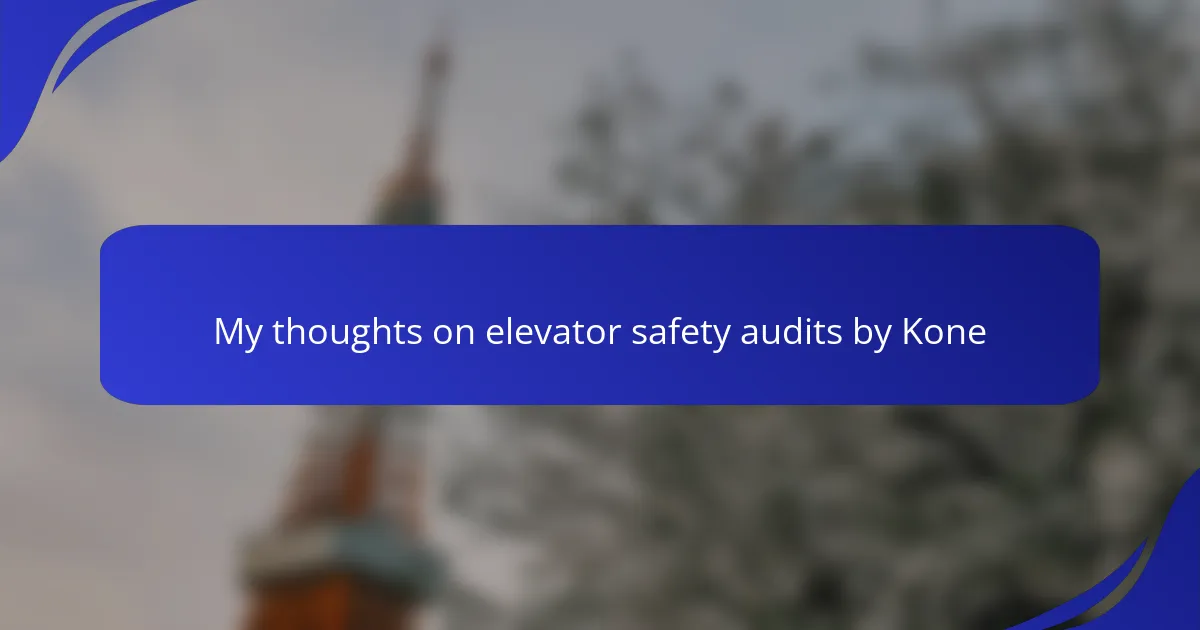Key takeaways
- The elevator industry has evolved from steam-driven systems to modern smart elevators, greatly enhancing safety and efficiency.
- Elisha Otis’s introduction of the safety brake marked a significant advancement in elevator safety standards.
- Thorough inspections, including regular maintenance and detailed checks, are essential for identifying issues and ensuring passenger safety.
- Emphasizing communication and technology in inspections can lead to improved safety outcomes and proactive maintenance practices.
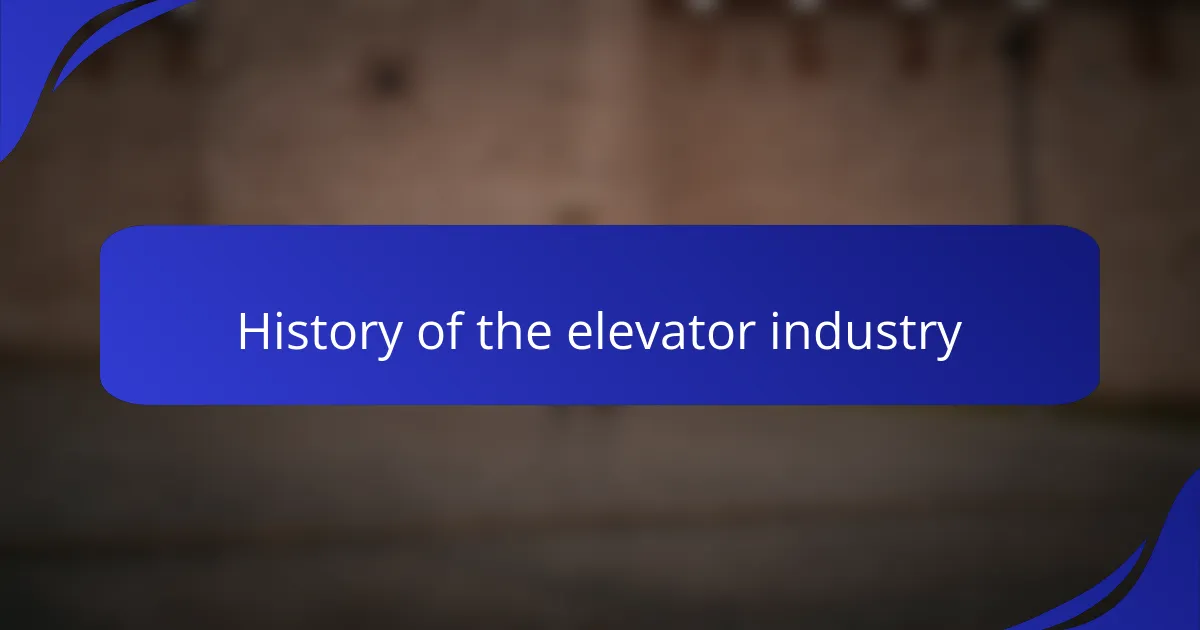
History of the elevator industry
The history of the elevator industry is a fascinating journey that reflects innovation and the urbanization of societies. Elevators revolutionized building design, transforming how people move within tall structures. I remember visiting skyscrapers and being awed not just by their height but by the technology that allowed me to ascend with ease, a testament to human ingenuity.
From the early rope and pulley systems of the 19th century to the advanced smart elevators of today, each development has significantly improved safety, efficiency, and convenience. Today’s inspections are rooted in the lessons learned from past failures, reminding us that regular maintenance and checks are vital for public safety.
- The first practical elevators were invented in the mid-1800s, driven by steam engines.
- Hydraulic elevators emerged in the late 1800s, allowing for taller buildings and increased accessibility.
- Safety features, such as the safety brake, were introduced by Elisha Otis in the 1850s, fundamentally changing elevator reliability.
- Modern elevators utilize smart technology for efficiency, offering features like real-time monitoring and energy-saving modes.

Evolution of elevator safety standards
The evolution of elevator safety standards is a profound journey that mirrors society’s growing emphasis on safety and technology. In the wake of the tragic elevator accidents in the early 20th century, regulators recognized the urgent need for comprehensive safety protocols. I often think about how these pivotal moments shaped today’s stringent inspections, reminding us that each misstep led to crucial advancements that prioritize human lives.
When Elisha Otis introduced the safety brake, it wasn’t just an innovation; it was a revolutionary leap toward ensuring security in vertical transport. I can’t help but feel a sense of relief knowing that even the simplest components, like a brake, can have such a significant impact on our daily journeys. Over the decades, this mindset evolved into modern standards that embrace technology, with advanced systems now actively monitoring elevators to prevent malfunctions before they endanger anyone.
Today, as I observe smart elevators with their intricate safety features, I reflect on the importance of continual progress in safety standards. It’s fascinating to see how our understanding of risk has transformed. What would early engineers think if they could witness how far we’ve come? The focus on innovation coupled with rigorous inspections ensures elevators remain one of the safest modes of transport in our bustling urban landscapes.
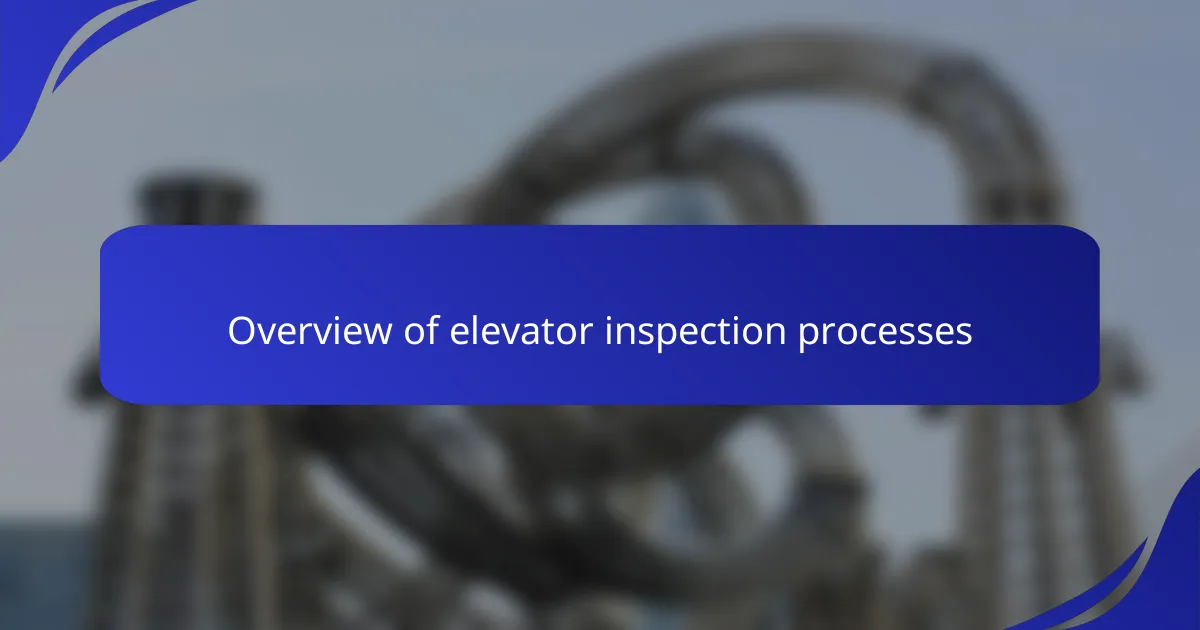
Overview of elevator inspection processes
The elevator inspection process is crucial for ensuring safety and compliance. Each inspection typically falls into several categories: routine inspections, safety tests, and compliance checks. I often reflect on how vital these evaluations are—not just for regulatory requirements but for the peace of mind they provide to users.
During my experience in the elevator industry, I’ve seen firsthand the impact of thorough inspections. Quick fixes might seem easy, but they can lead to larger issues later. Prioritizing comprehensive evaluations over superficial checks can enhance safety and reduce downtime.
To give you a clearer picture, here’s a comparison of the different types of inspections involved in the process:
| Type of Inspection | Description |
|---|---|
| Routine Inspection | Conducted regularly, focusing on day-to-day operation and minor adjustments. |
| Safety Tests | In-depth assessments that evaluate emergency systems and equipment functionality. |
| Compliance Checks | Ensure adherence to local and national safety codes and regulations. |
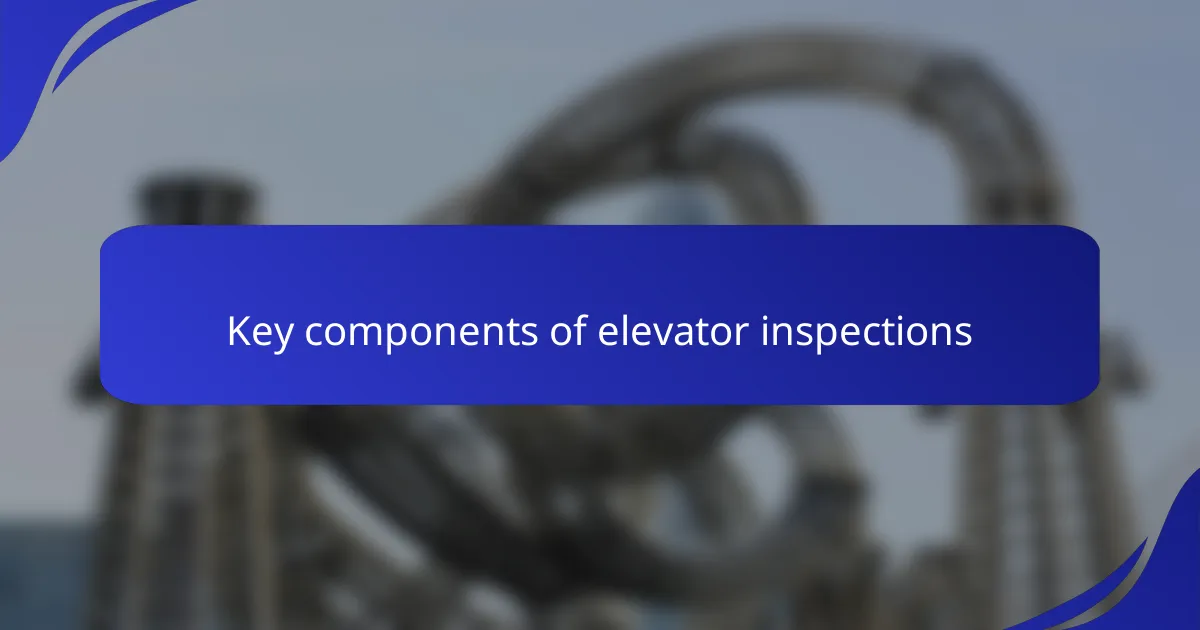
Key components of elevator inspections
One of the key components of elevator inspections is the thorough examination of mechanical systems. I remember my first inspection where I was amazed at the complexity of the components involved. Each piece, from the cables to the pulleys, plays a crucial role in ensuring safe operation. A minor oversight could lead to significant issues down the line, emphasizing the importance of a meticulous approach.
Another vital aspect includes the inspection of safety devices. These systems compress a wealth of technology into compact forms, such as brakes and alarms, all designed to keep passengers safe in any situation. It’s fascinating to see how technology continuously evolves in elevators, making them more reliable than ever—yet I always feel a rush of responsibility knowing that effective inspections can prevent accidents.
Key Components of Elevator Inspections:
- Mechanical System Check: Evaluate cables, pulleys, and motors for wear and tear.
- Safety Device Examination: Inspect brakes, alarms, and emergency communications.
- Electrical System Assessment: Test circuit boards and control systems for proper functionality.
- Hydraulic System Evaluation: Examine fluid levels and seals for potential leaks.
- Car and Hoistway Condition: Assess the integrity and cleanliness of the elevator car and shaft.
- Load Testing: Ensure that the elevator can safely lift its maximum rated load.
- Documentation Review: Check inspection records for compliance with safety standards.
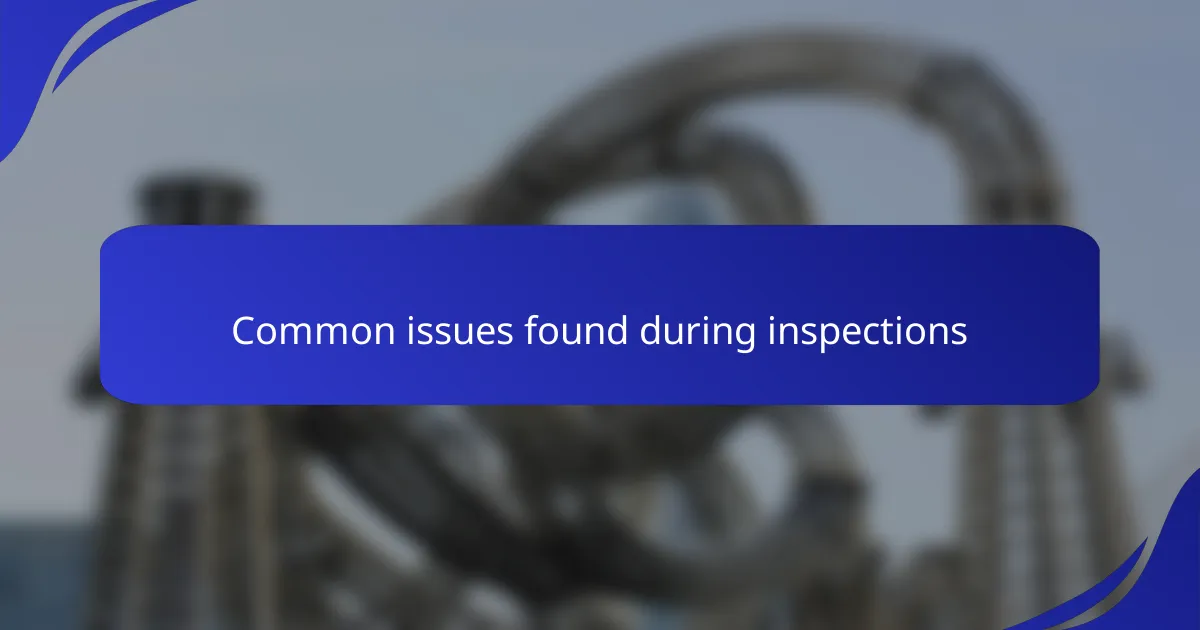
Common issues found during inspections
Elevator inspections often reveal a range of common issues that can impact safety and functionality. I’ve witnessed firsthand how even minor problems, like misaligned doors, can lead to significant safety hazards if not addressed promptly. It’s essential to pay attention to the little details during inspections, as they can be indicative of larger, underlying issues.
Another frequent issue I’ve encountered is the wear and tear on cables and pulleys. These components are crucial for smooth operation, and seeing frayed cables always gives me pause. It’s a reminder of how vital regular maintenance is, not just for compliance, but for the peace of mind it brings to users.
Lastly, I’ve seen a variety of control panel malfunctions. Sometimes, the simplest solutions—like replacing a burnt-out bulb—can prevent larger problems down the road. This experience reinforces my belief that thorough inspections are not just a regulatory requirement; they’re a commitment to safety that the industry should uphold.
| Common Issues | Potential Consequences |
|---|---|
| Misaligned doors | Increased risk of accidents |
| Worn cables and pulleys | Elevator malfunction or failure |
| Control panel malfunctions | Inconvenience and delays in operation |
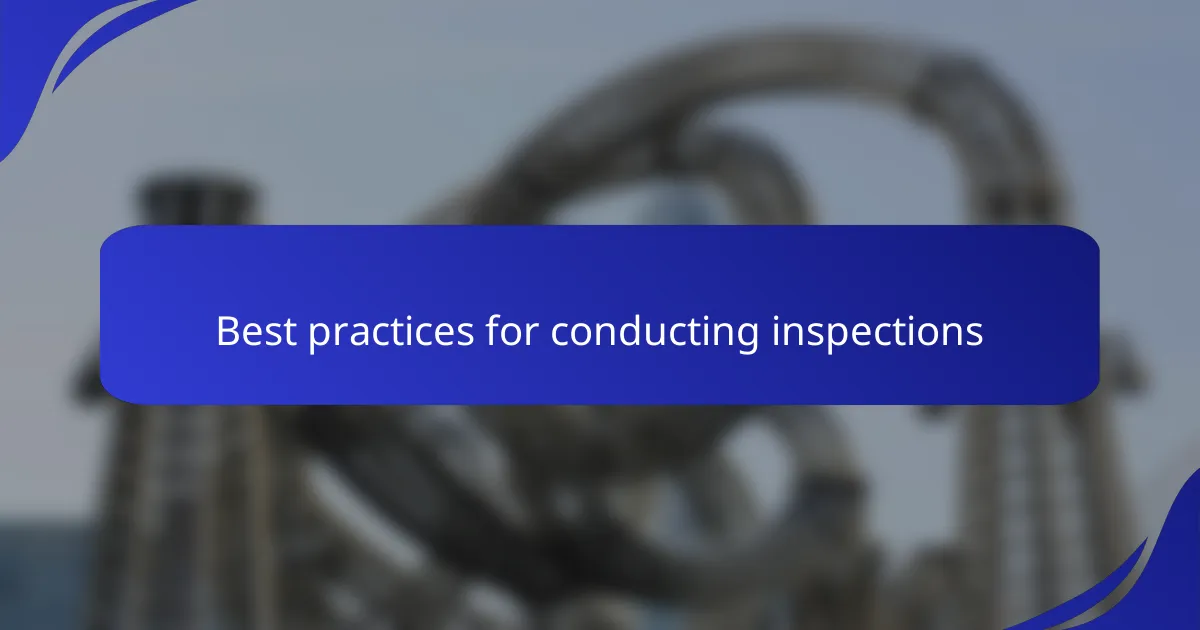
Best practices for conducting inspections
When conducting elevator inspections, one of the best practices I’ve adopted is to approach each inspection as a learning experience. I’ve learned that a methodical approach—starting with a review of service logs before physically checking the equipment—can reveal patterns in maintenance issues. This initial step not only helps identify recurring problems but also provides insight into the history and potential weak points of the elevator system.
Another point I can’t stress enough is the importance of utilizing a checklist during inspections. I remember the first time I overlooked checking the emergency communication systems simply because I thought they were functioning well. Later, in a different inspection, I discovered a fault that could have led to a serious safety issue had it not been addressed. Using a detailed checklist ensures that every component, from mechanical systems to safety devices, receives the attention it deserves.
Lastly, I believe fostering open communication with maintenance teams is crucial. Engaging them in discussions about the findings can encourage a culture of safety awareness and ownership. In my experience, I often ask them about their observations and any concerns they have noted; they can provide valuable insights that enrich the inspection process and improve overall safety outcomes. Wouldn’t you agree that elevating teamwork in this way transforms the inspection from a mere task into a collaborative effort for safety and excellence?
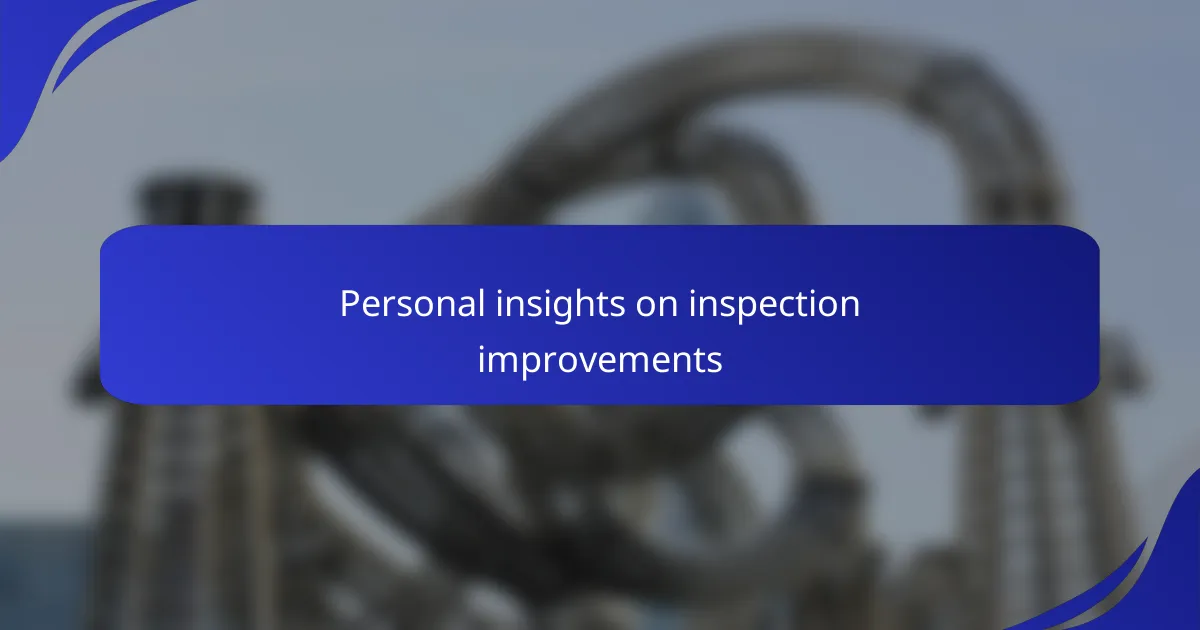
Personal insights on inspection improvements
When it comes to inspection improvements, I believe in the power of technology to enhance safety and efficiency. For instance, integrating automated systems for real-time monitoring not only streamlines inspections but also reduces human error. I’ve seen firsthand how these advancements can transform a traditionally tedious process into a more proactive one.
Additionally, communication is key. In my experience, fostering a strong relationship between inspectors and building managers leads to more thorough inspections. When both parties are on the same page, potential problems are often spotted earlier, resulting in safer environments for elevator users.
Below is a comparison table illustrating traditional inspection methods versus modern inspection improvements:
| Traditional Inspection Methods | Modern Inspection Improvements |
|---|---|
| Manual inspections rely heavily on the inspector’s experience. | Automated monitoring systems provide real-time data and alerts. |
| Reactive approach addressing issues only after they arise. | Proactive approach preventing issues through continuous monitoring. |
| Communication often fragmented between inspectors and building managers. | Enhanced communication fosters collaboration and thorough inspections. |
